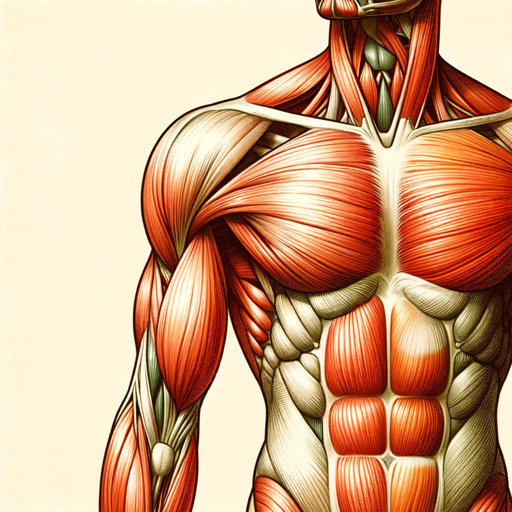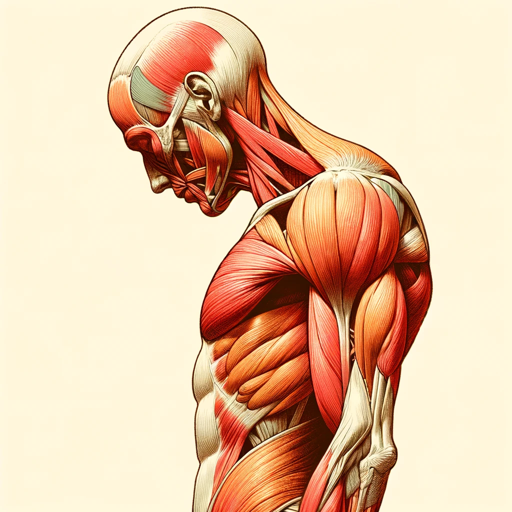Gray's Anatomy-comprehensive anatomy resource online
AI-powered anatomical learning tool
What can you tell me about the heart?
Explain the anatomy of the human brain.
Describe the skeletal system.
Can you summarize the muscular system?
Related Tools
Load More
Anatomy Tutor
🔷#𝟏 𝐒𝐩𝐞𝐜𝐢𝐚𝐥𝐢𝐳𝐞𝐝 𝐀𝐧𝐚𝐭𝐨𝐦𝐲 𝐓𝐮𝐭𝐨𝐫🔷

Human Anatomy - Physiology Instruction Specialist
A seasoned expert specializing in the education of human anatomy and physiology, dedicated to enhancing content creation and refinement for superior learning experiences."

Family Doctor
A digital doctor for general health advice and education

Anatomy Guide
Friendly anatomy expert for medical students.

Physiology Pro
An expert in human physiology, providing detailed and accurate information.

Anatomy Illustrator
Anatomy image creator
20.0 / 5 (200 votes)
Introduction to Gray's Anatomy
Gray's Anatomy is a comprehensive textbook on human anatomy originally published in 1858 by Henry Gray and illustrated by Henry Vandyke Carter. Its purpose is to provide detailed descriptions of the structure of the human body, integrating aspects of gross anatomy, microscopic anatomy, and embryology. The book is designed as a reference for medical students, professionals, and educators, offering a foundational understanding of human anatomy through extensive illustrations and thorough textual explanations. An example of its use includes aiding a medical student in learning the detailed structure of the vertebral column or guiding a surgeon in understanding the intricate relationships between muscles and nerves in the arm before a complex surgery.

Main Functions of Gray's Anatomy
Educational Reference
Example
Medical students use Gray's Anatomy to study the organization of the human body, including bones, muscles, nerves, and vessels.
Scenario
In a medical school setting, students are required to learn detailed human anatomy. They use Gray's Anatomy to understand complex structures like the brachial plexus, which is crucial for diagnosing nerve injuries in the arm.
Clinical Reference for Practitioners
Example
Surgeons refer to Gray's Anatomy to review anatomical structures prior to surgery.
Scenario
A surgeon preparing for a thyroidectomy may consult the section on the neck's vasculature and nerves to plan the incision and avoid complications.
Research and Academic Use
Example
Anatomy educators and researchers use Gray's Anatomy to support their teaching materials and scientific papers.
Scenario
A professor may reference the book when creating lecture slides on the development of the heart, ensuring accurate and detailed information is conveyed to students.
Ideal Users of Gray's Anatomy
Medical Students and Educators
Medical students rely on Gray's Anatomy for a foundational understanding of human anatomy. Educators use it to develop curricula and teach complex anatomical concepts. The detailed illustrations and explanations make it an indispensable resource in medical education.
Healthcare Professionals
Surgeons, radiologists, and other healthcare professionals use Gray's Anatomy as a reference for clinical practice. It helps them to refresh their knowledge of specific anatomical areas, aiding in diagnostic procedures and surgical planning.

How to Use Gray's Anatomy
Visit aichatonline.org for a free trial without login, also no need for ChatGPT Plus.
Start your access by visiting the site and utilizing the free trial. This step ensures easy access to the tool.
Identify the relevant section for your study.
Gray's Anatomy is divided into chapters based on the system or body region. Locate the chapter dealing with the anatomy you are studying.
Use the table of contents or index.
Quickly navigate by searching specific terms or body parts through the comprehensive table of contents or index for efficient studying.
Examine the illustrations closely.
Gray's Anatomy contains numerous detailed engravings and diagrams. Use these visual aids to reinforce your understanding of anatomical structures.
Cross-reference with clinical cases or studies.
For a deeper understanding, correlate what you read with clinical case studies or modern anatomical references for real-world application.
Try other advanced and practical GPTs
Bot Advisor
AI-Powered Bot Solutions Simplified.

AI个人商业化专家
AI-Powered Business & IP Solutions

Logo Craft AI
AI-Powered Logo Design Simplified

Computer Vision Expert
AI-powered insights for computer vision research

Deep Learning Master
AI-powered insights for deep learning mastery

MrPython
AI-powered Python programming assistant

Crypto Market Maven
AI-powered cryptocurrency market insights

Study Buddy
AI-powered tool for smarter learning.

Home Style Advisor
Transform Your Space with AI-Powered Decor

Experto Legal España
AI-powered Spanish legal advisor

Mathpix
AI-powered Text and Equation Conversion.

Analyseur CV Emploi
AI-powered CV and Job Matching

- Education
- Surgical Planning
- Clinical Studies
- Research Reference
- Anatomical Illustrations
Common Questions About Gray's Anatomy
What is Gray's Anatomy primarily used for?
Gray's Anatomy is a comprehensive reference guide on human anatomy, often used by medical students, healthcare professionals, and researchers for detailed anatomical descriptions and illustrations.
Can Gray's Anatomy be used for learning clinical applications?
Yes, while Gray's Anatomy focuses on descriptive anatomy, it serves as a foundation for understanding clinical conditions, surgical approaches, and diagnostic practices.
Does Gray's Anatomy cover microscopic anatomy?
Yes, Gray's Anatomy includes microscopic anatomy, embryology, and gross anatomy, providing a full perspective on human structure, from the cellular level to entire organ systems.
How does Gray's Anatomy support academic research?
The text offers in-depth anatomical details and extensive references, making it a reliable source for academic writing, research, and citation in medical and biological sciences.
Is Gray's Anatomy suitable for beginners?
It can be used by beginners, but due to its detailed and advanced content, it is best suited for students with some foundational knowledge of biology or human anatomy.